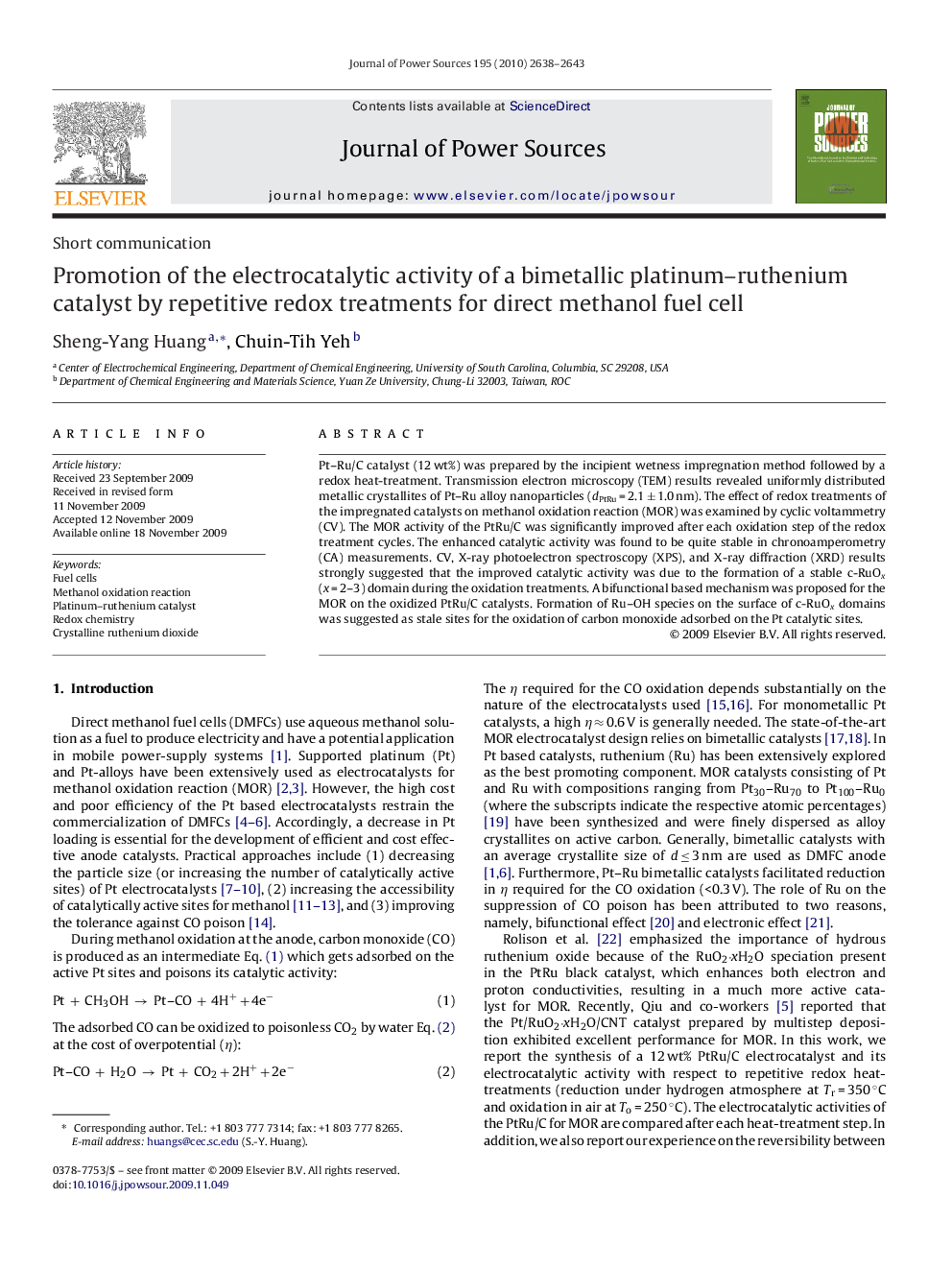| Article ID | Journal | Published Year | Pages | File Type |
|---|---|---|---|---|
| 1285014 | Journal of Power Sources | 2010 | 6 Pages |
Abstract
Pt-Ru/C catalyst (12 wt%) was prepared by the incipient wetness impregnation method followed by a redox heat-treatment. Transmission electron microscopy (TEM) results revealed uniformly distributed metallic crystallites of Pt-Ru alloy nanoparticles (dPtRu = 2.1 ± 1.0 nm). The effect of redox treatments of the impregnated catalysts on methanol oxidation reaction (MOR) was examined by cyclic voltammetry (CV). The MOR activity of the PtRu/C was significantly improved after each oxidation step of the redox treatment cycles. The enhanced catalytic activity was found to be quite stable in chronoamperometry (CA) measurements. CV, X-ray photoelectron spectroscopy (XPS), and X-ray diffraction (XRD) results strongly suggested that the improved catalytic activity was due to the formation of a stable c-RuOx (x = 2-3) domain during the oxidation treatments. A bifunctional based mechanism was proposed for the MOR on the oxidized PtRu/C catalysts. Formation of Ru-OH species on the surface of c-RuOx domains was suggested as stale sites for the oxidation of carbon monoxide adsorbed on the Pt catalytic sites.
Related Topics
Physical Sciences and Engineering
Chemistry
Electrochemistry
Authors
Sheng-Yang Huang, Chuin-Tih Yeh,
